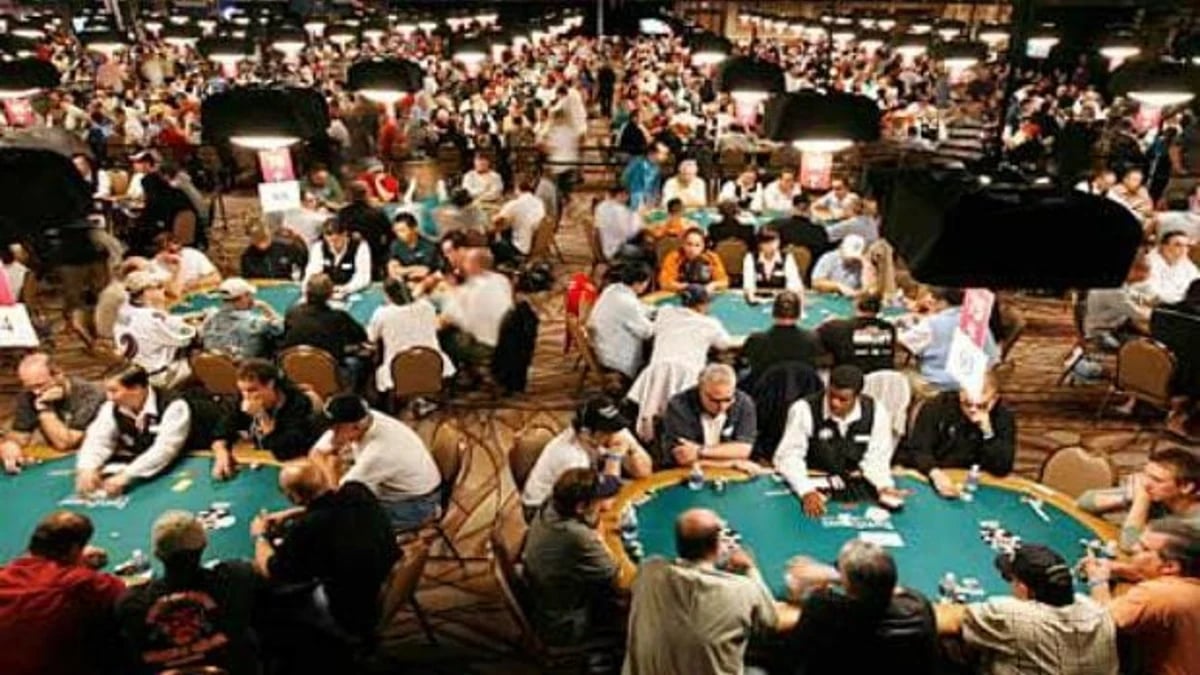Poker Tournaments: Re-Buy Tournaments Strategy

Before entering any type of tournament it is very important to first understand the structure of the tournament. In this article, we will be talking exclusively about multi-table tournaments. So, you should not apply any of the theory within this article to 'Sit and Go' style tournaments.
Re-Buy vs Freeze-Out
The first thing you should always check before entering a poker tournament is whether it is a Freeze-Out or Re-Buy Tournament. To simplify this concept, a Freeze-Out Tournament is one you pay a specific entry fee in exchange for a specific amount of chips, which you are then allowed to use however you want on the felt. If you get knocked out of the tournament, that is, you lose all your chips then you are out of it. You have no chance of re-buying into the tournament or starting from the beginning. On the contrast, in a Re-Buy Tournament, you begin with a specific number of chips, but if you lose them, you are allowed to pay the entry fee again in order to receive the same number of chips.
In many Re-Buy Tournaments, you are given the choice to start with a double-buy-in, which simply means that you can pay 2x the entry fee at the start in order to get twice the amount of chips your competitors will. We will be expanding later on this concept, to see if it is profitable or not. Keep in mind that in these types of tournaments you are also given the option to buy-in single or double amount of chips when you lose your stack.
Re-Buy Tournaments must always have a time limit, or a level limit, set by the tournament director at a pre-arranged time for the re-buy period will end. If this was not the case, then players could keep re-buying into the tournament even on the final table. Other tournaments, frequently called 2x Chance Tournaments, give you the option of only re-buying into the tournament once. Other tournaments may limit your re-buys to 3 or 5.
Lastly, when the re-buy period ends there is always a brief add-on period, which usually lasts between 5-10, where all the players get the option to add a specific amount of chips to their stack, regardless of their initial chip stack. Although many players feel that it is a must, no matter what the situation is, it is important to keep in mind that this is not always the case.
Pre-Limiting Your Re-Buys
The key element in being successful in the Re-buy Tournament sector is pre-limiting your re-buys. If you go to the casino/card room you will probably have enough money for 10 re-buys in any given standard tournament. Sometimes, especially for beginners, players get carried away and re-buy into the tournament even when the blinds are huge and they have no chance of building a stack. So, before entering any type of Re-Buy Tournament you should always plan how many times you can to re-buy (also counting your add-on), and when you should change this plan. For example, you were doing well in your first buy in, but you went bust near the end of the re-buy period when the blinds have increased considerably.
When You Shouldn't Add-On
As mentioned before, at the end of each Re-Buy Tournament you will be given the option to add on chips to your stack. The cost is the same as it cost entering the tournament, but most times you are offered 2-3 times the amount of chips, to try to equalize the impact of the blind difference. There are two main scenarios at which you should not add-on:
- If you are in a commanding position over the tournament, holding more than 2x the chips average, then you are better off not wasting your money.
- If you are low on chips you may also wish not re-buy, as you will probably be better off playing the short stack and trying to get a couple of double ups in order to get yourself back in to the average chip count.
Three Main Strategies to Consider When Playing a Re-Buy Tournament
1. Playing it Loose
The first strategy is the most risky, where you are willing to spend between 10 and 20 buy-ins in order to play the tournament. Always be aware that there are enough players in the field to justify these re-buys. You don’t want your money totaling 50% of the prize pool. The main aim is to play all Class A cards extremely aggressive, preferably getting all your chips all-in on a coin flip situation. You should continue doing this until the re-buy period is over or until you amass about 5-10 times the average chip stack.
2. The Intermediate Strategy
For this strategy, you should take into consideration all of what we have said above, especially the part about pre-limiting your re-buys. You should take risks, but calculated risks, try to avoid coin flips as you would in a Freeze-Out Tournament. Don’t shy away from too much value. You should aim to be using somewhere between 2-5 re-buys.
3. Playing it Freeze-Out
The third strategy is a bit trickier, where you play Re-Buy Tournament using just a single buy-in, which depending on your choice may also consist of an add-on. The theory behind this strategy is even though the variance of the tournament circuit will be higher; you will not manage to cash as much as you would in a Freeze-Out Tournament. You will have the opportunity to increase your investment/pay-out ratio and if played correctly in a tight/solid matter should be very rewarding










